A distributed transaction solution with high performance and ease of use for microservices architecture.
Let's imagine a traditional monolithic application. Its business is built up with 3 modules. They use a single local data source.
Naturally, data consistency will be guaranteed by the local transaction.
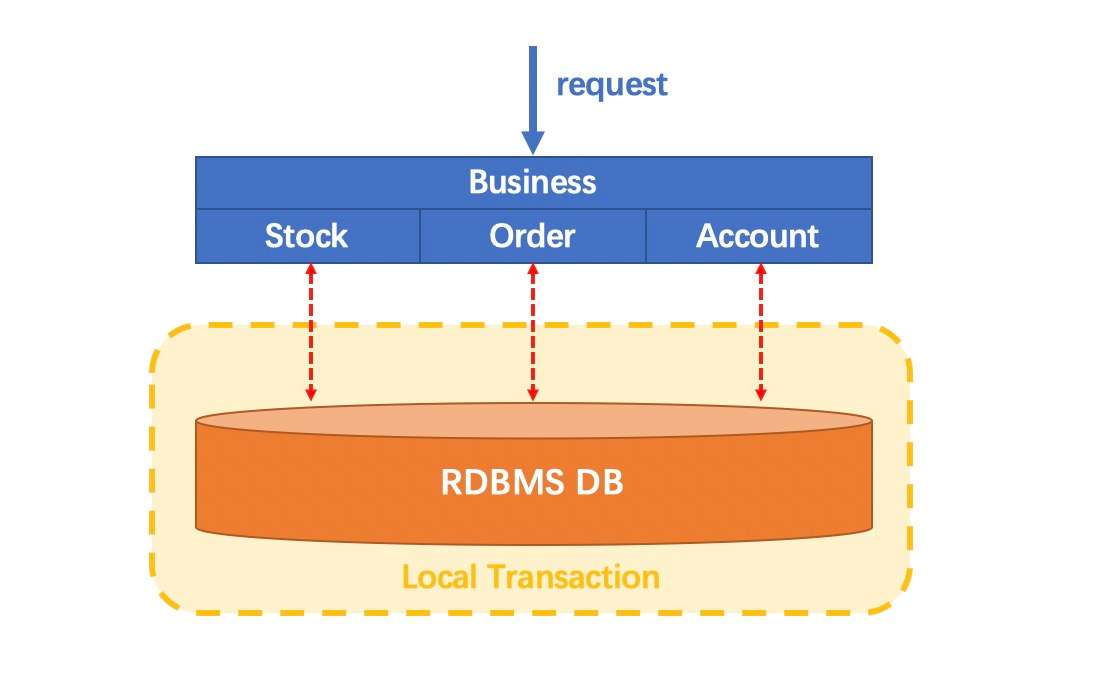
Things have changed in a microservices architecture. The 3 modules mentioned above are designed to be 3 services on top of 3 different data sources (Pattern: Database per service). Data consistency within every single service is naturally guaranteed by the local transaction.
But how about the whole business logic scope?

Seata is just a solution to the problem mentioned above.
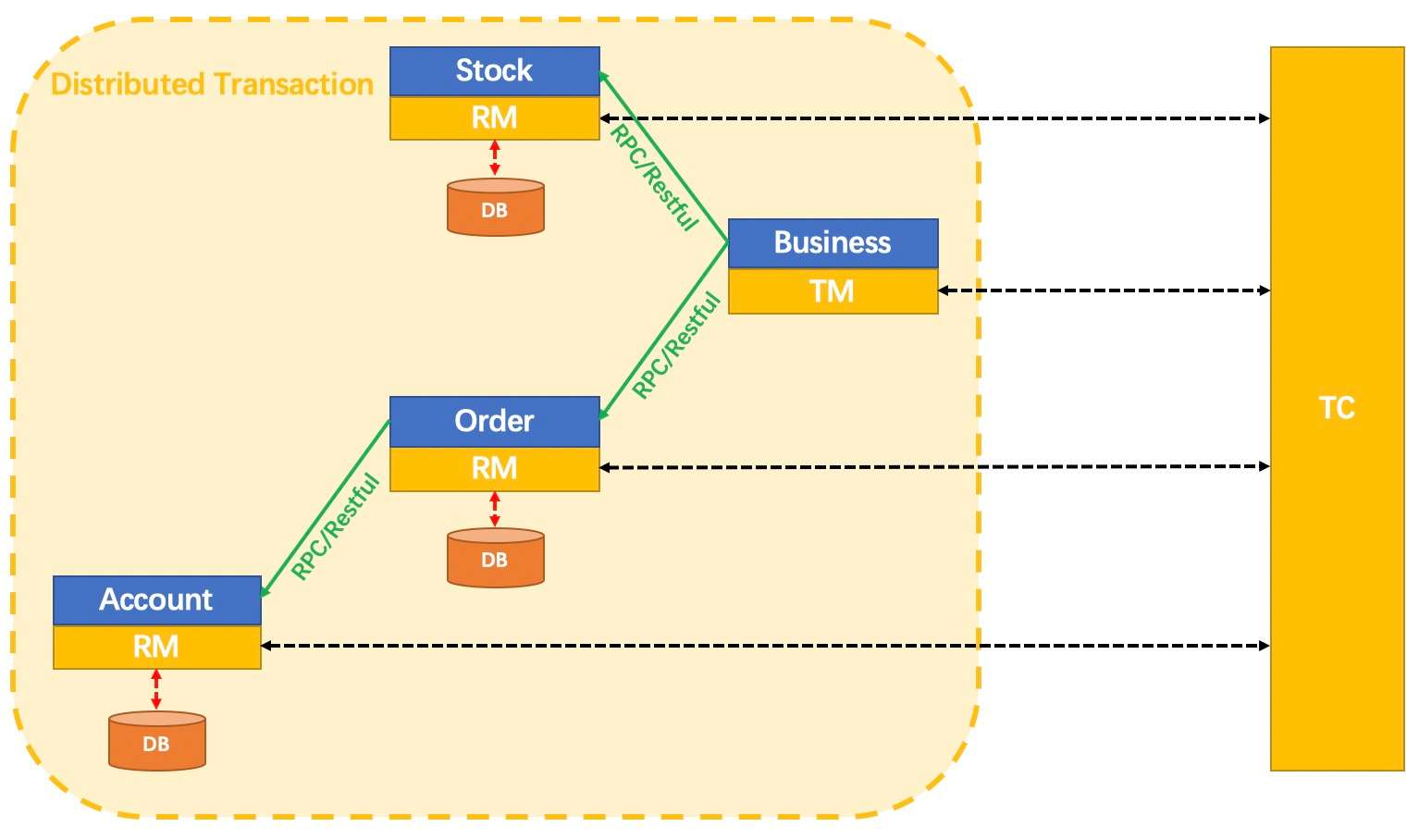
Firstly, how to define a Distributed Transaction?
We say, a Distributed Transaction is a Global Transaction which is made up with a batch of Branch Transaction, and normally Branch Transaction is just Local Transaction.
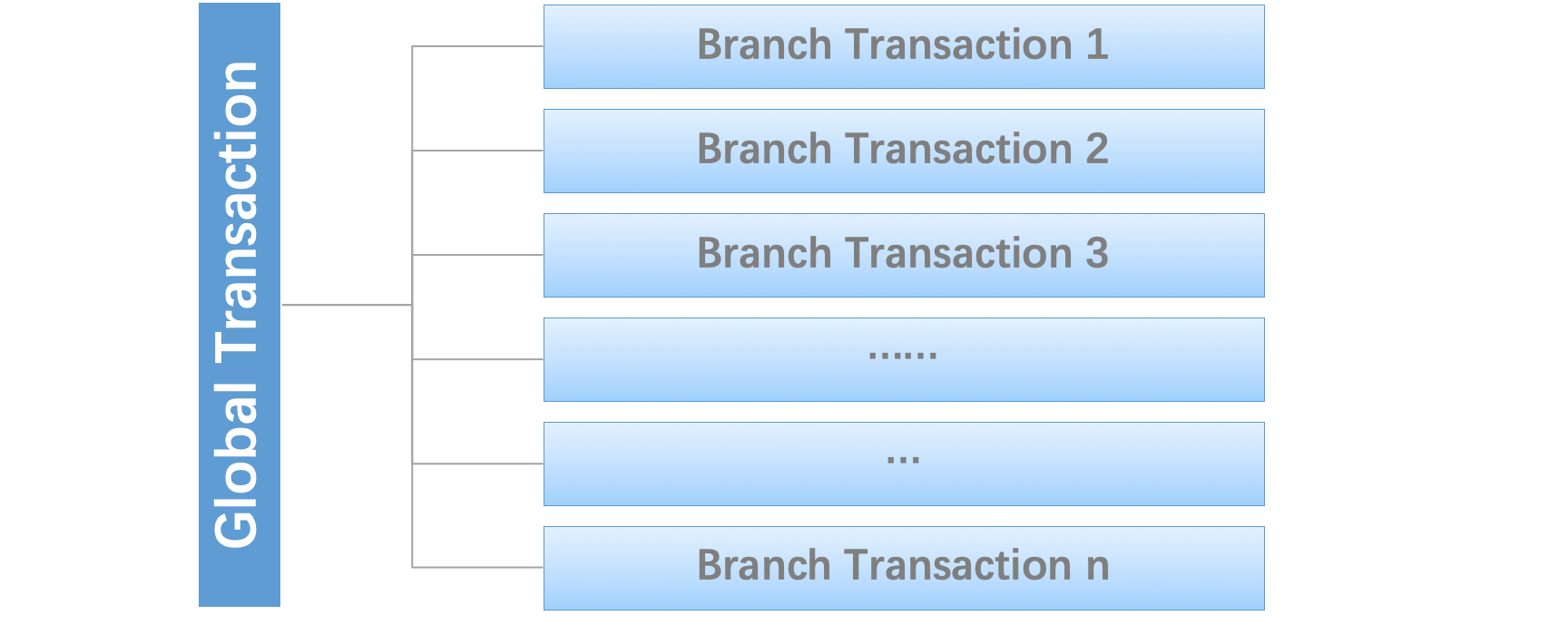
There are three roles in Seata Framework:
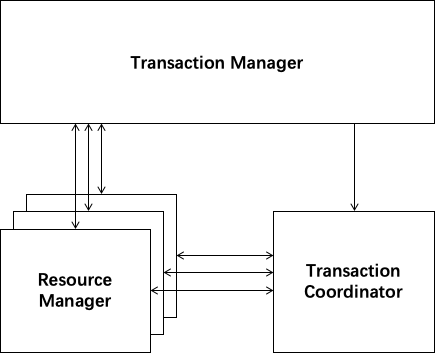
A typical lifecycle of Seata managed distributed transaction:
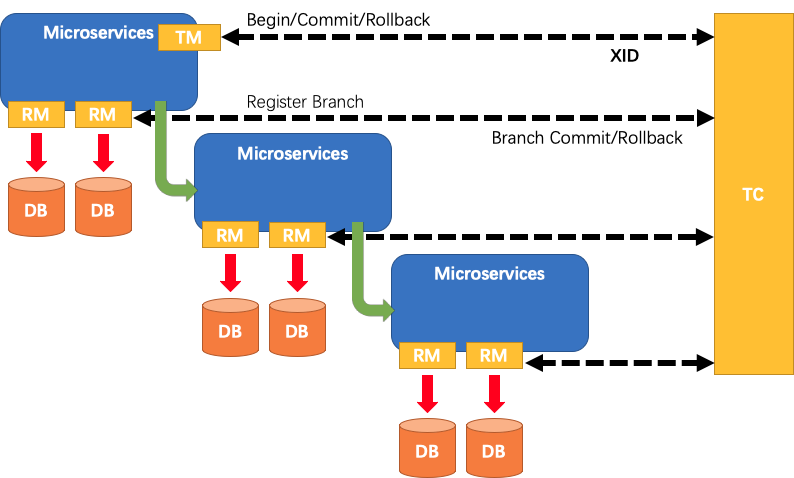
For more details about principle and design, please go to Seata wiki page.
XTS: Extended Transaction Service. Ant Financial middleware team developed the distributed transaction middleware since 2007, which is widely used in Ant Financial and solves the problems of data consistency across databases and services.
DTX: Distributed Transaction Extended. Since 2013, XTS has been published on the Ant Financial Cloud, with the name of DTX .
Depending on the scenario, choose one of the two dependencies: org.apache.seata:seata-all or org.apache.seata:seata-spring-boot-starter.
<properties> <seata.version>2.4.0</seata.version> </properties> <dependencies> <!--dependencies for non-SpringBoot application framework--> <dependency> <groupId>org.apache.seata</groupId> <artifactId>seata-all</artifactId> <version>${seata.version}</version> </dependency> <!--If your project base on `Spring Boot`, you can directly use the following dependencies--> <!--Notice: `seata-spring-boot-starter` has already included `seata-all` dependency--> <dependency> <groupId>org.apache.seata</groupId> <artifactId>seata-spring-boot-starter</artifactId> <version>${seata.version}</version> </dependency> </dependencies>
You can view the full documentation from Seata Official Website: Seata Website page.
Please follow the template for reporting any issues.
Please do not use our public issue tracker but refer to our security policy
Contributors are welcomed to join the Seata project. Please check CONTRIBUTING and CONTRIBUTING-CN about how to contribute to this project.
| Dingtalk group | Wechat official account | QQ group | Wechat assistant |
|---|---|---|---|
This project exists thanks to all the people who contribute. [Contributors].
Seata is under the Apache 2.0 license. See the LICENSE file for details.
These are only part of the companies using Seata, for reference only. If you are using Seata, please add your company here to tell us your scenario to make Seata better.